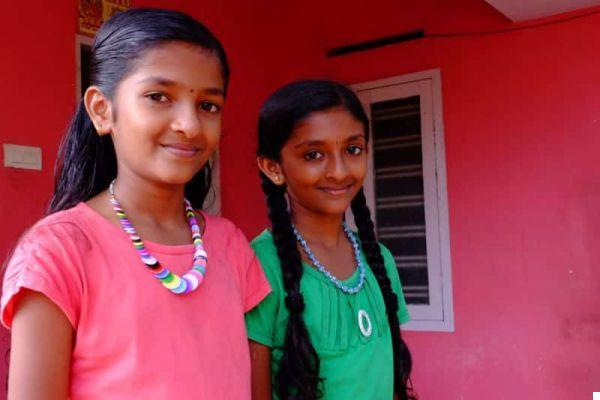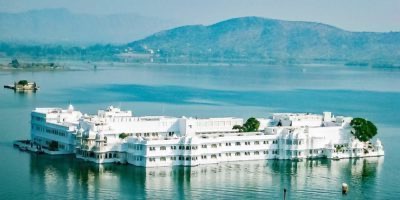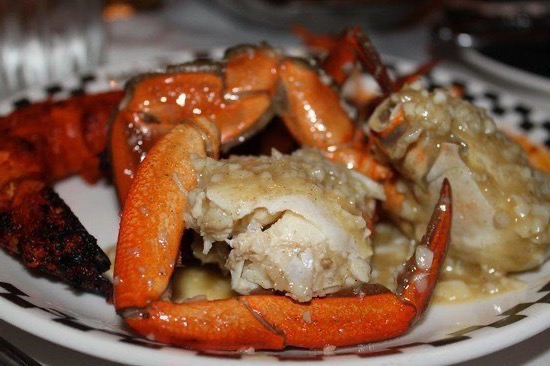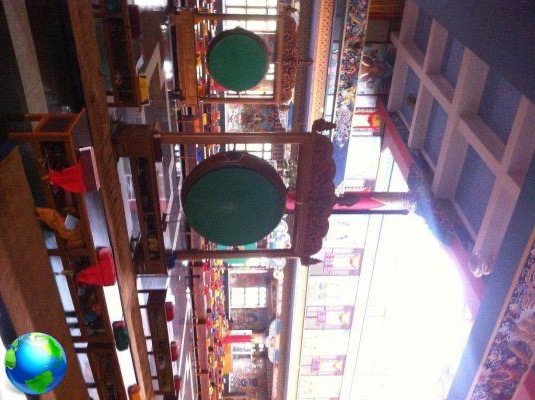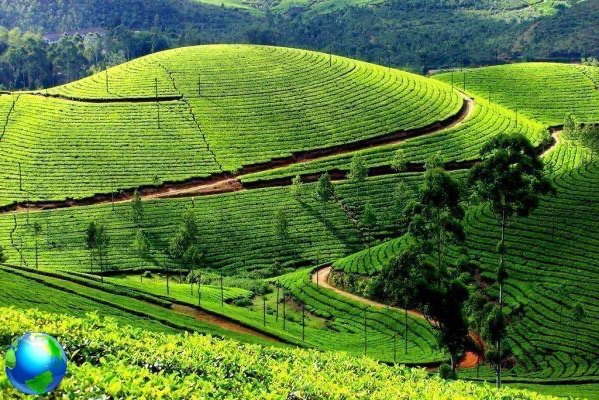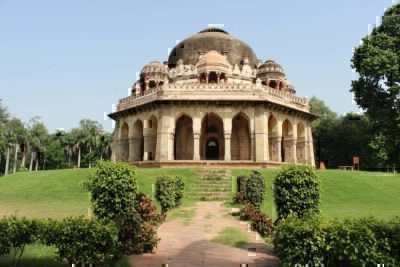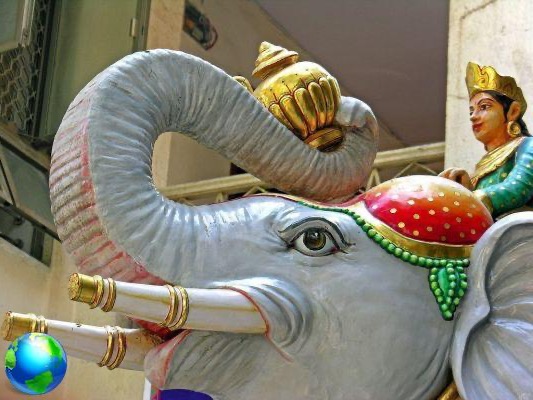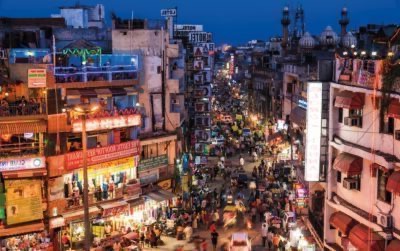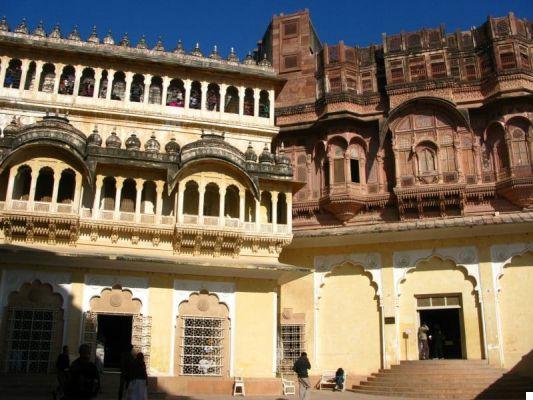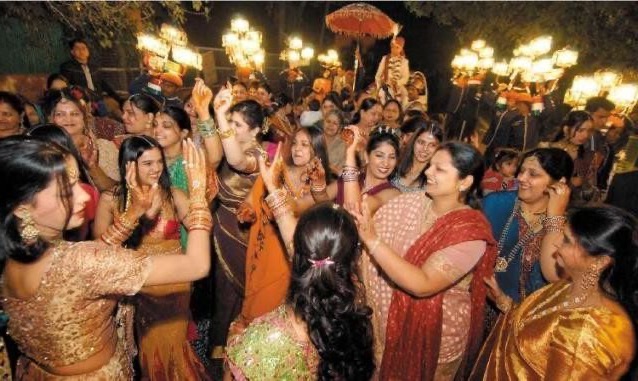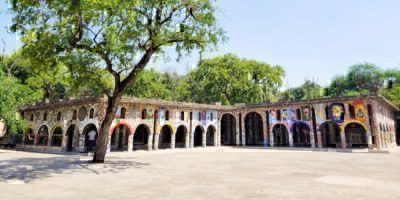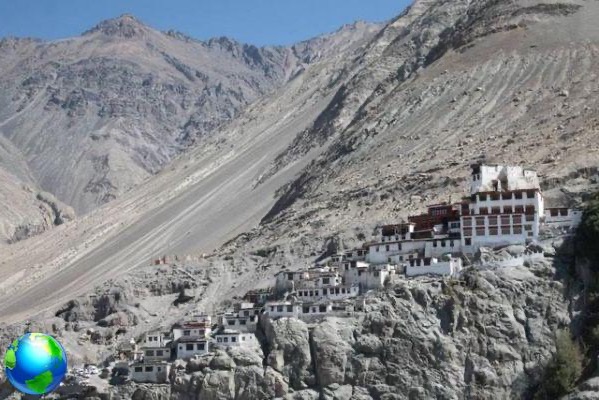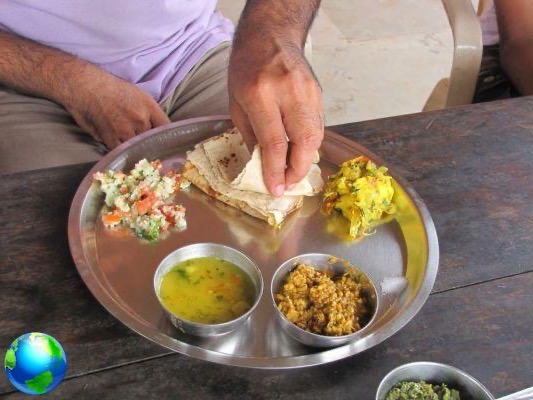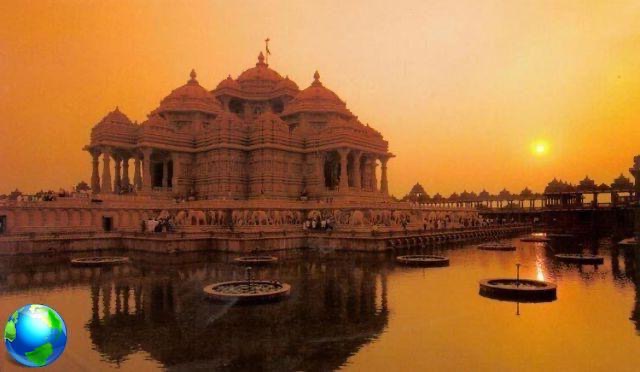I just got back from Kerala Blog Express and I was looking forward to sharing this amazing experience with you! But let's take a step back, several months ago I applied to participate in this blog tour in south India organized byKerala Tourism Board (for the uninitiated, a blog tour is a journey where bloggers are invited to promote the area through articles, posts, photos and videos). It was the 30th edition of the Kerala Blog Express and, in the face of hundreds of applications, XNUMX international travel bloggers were then selected (only one for each country) and .. guess what?
I had already been to this region ofSouth India almost 10 years ago but I had very little time to shoot it and the blog tour turned out to be an excellent opportunity to recover (especially since I loved what little I had seen of Kerala!).
If you followed me on social media during the trip, you will have already understood that it was a truly magical experience! The Kerala Blog Express slogan was “Trip of a lifetime”(journey of a lifetime) and it really was. I had the privilege of seeing beautiful places and experiencing the culture and traditions of the country in the company of 29 complete strangers who have become friends for life. This is one of the great magic of traveling: you share the journey with people you don't know and in a short time bonds are established that will remain forever. But I don't want to infect you with my sentimentality so, it's time to tell you everything that you absolutely cannot miss if you take a trip to Kerala.
Why choose Kerala
The word Kerala comes from the union of 2 words: kera which means coconut palm and alam, which means earth, or the land of coconut palms. These plants are in fact found everywhere and border its entire coastline. Kerala is a profoundly different region from the rest of India; many foreign explorers landed here (Vasco de Gama in primis) attracted by spice trade and everywhere there are traces of his colonial past: Christian churches of the Syrian rite, mosques, Dutch and Portuguese style houses, buildings from the era of the raj and even a sixteenth-century synagogue in Kochi. Tolerance has a long tradition and here, without any disorder, every type of confession was accepted, which then took on a local tint over time. Kerala is one of the richest regions in India, is the one with the higher literacy rate (93%), the one in which the poverty is hardly visible (but that doesn't mean it doesn't exist!) and the culture maintains original characters that are not found elsewhere. In short, it is the perfect region to approach India in a soft way!
In addition to this, of course, there are unique landscapes: the backwaters for example you will find them only here and alone are worth a trip to India.
How to apply for India Visa
The first step for a trip to India is to apply for a visa. Fortunately, from April 2017 you can easily request (and obtain) the electronic visa (e-Tourist Visa) from the sofa at home using the computer. Find all the detailed info on how to request it in the article Visa for India: how to apply for the electronic visa (e-Visa).
When to go to Kerala
Except for the higher elevations, South India has a warm weather all year round and basically has two seasons: one dry and one rainy (or monsoon). There are 2 monsoon seasons in Kerala: southwest monsoon in May / June which is the strongest and most violent, and the northeast monsoon in October / November which is lighter. In general then the period from October to March is the best for traveling in this region because the climate is dry and mild. In summer it doesn't rain much but the heat is really unbearable (calculate that already in March / April it reaches 40 ° with a very high humidity).
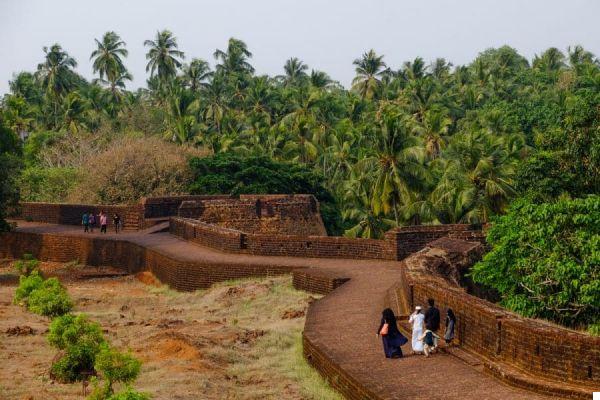
How to get around Kerala
Unless you have many days to spare, I advise you not to move using public transport (even if the experience of the Indian train must be done at least once in a lifetime!) because disentangling between timetables, tickets and routes is not trivial and you will still take much longer. Likewise I do not recommend renting a car and exploring it on a self drive. In India the roads are shared with other cars, but also with cows, Christians, bicycles, tuk tuk, and so on and it is definitely dangerous to drive us if you are not Indians. The most comfortable thing to do is to take a car with a driver; you can negotiate the itinerary first so you will be sure to visit all the places you want in absolute freedom. A reliable agency (and recognized by the Kerala government) that offers this type of service is the Spiceland Holydays.
Health insurance is required
In India our health coverage is not valid. My advice is to always take a classic medical-luggage insurance that can cover you during the trip. I am very happy with many insurance companies, a site that compares the policies of different companies and proposes the most convenient policy for that particular trip. To do this you will have to enter the data relating to your trip (country, duration, etc.) and they will send you an email with the best proposal that you can then buy directly online.
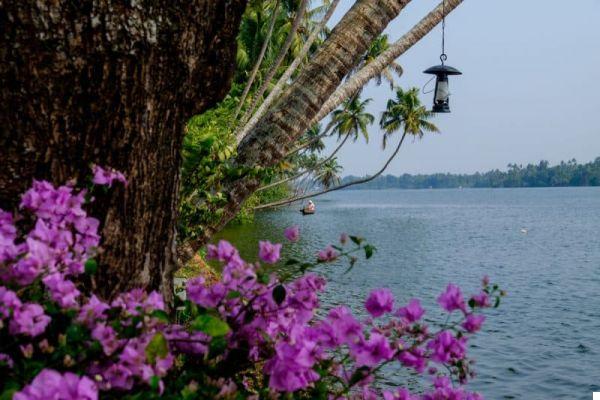
Travel to Kerala: 10 experiences not to be missed
1. Surf the backwaters
Le backwaters - inland waters - of Kerala are a must for anyone visiting the country. Navigating along the labyrinth of canals that winds for 900 km between the coast and the hinterland is probably the experience that will remain most impressed on the entire trip. The boats cross shallow lakes fringed with palm trees and strewn with Chinese fishing nets (trade relations with China have a centuries-old tradition!) And travel through narrow and shady canals where they are loaded with coconut fiber, copra (dehydrated coconut pulp ) and cashews. Along the way you will come across small villages with mosques, churches, temples, schools, hospitals and tiny clusters of houses that form an immense widespread city. My advice is to spend a full day on a house boat - floating house - seeing these wonderful landscapes pass slowly in front of you, savoring the authentic cuisine of Kerala, making friends with the villagers and sleeping on the water under the starry sky. The house boats are wonderful and there are hundreds of companies for all price ranges; renting the best ones can be quite expensive (even 150/200 euros each) but the experience is worth every single rupee you will have spent. For me it was the most beautiful stage of the journey and I don't think I will ever be able to forget the sense of peace I experienced while sailing on those waters, nor the colors of sunrise and sunset.
INFO: it is possible to experience the backwaters starting from many different points of Kerala but the most famous are certainly Allapunzha e Kollam. We started from Allapunzha on a luxury house boat of the Spice Routes company and, needless to say, we had a great time.
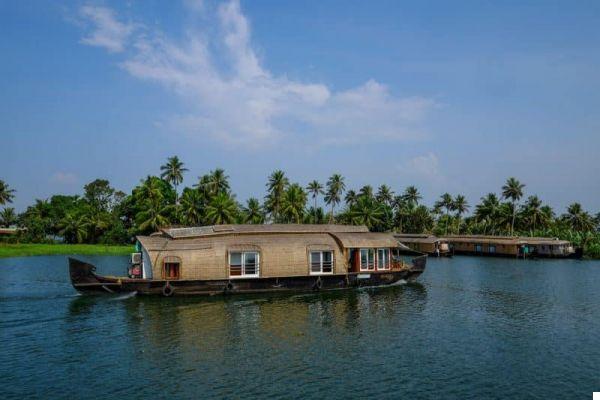
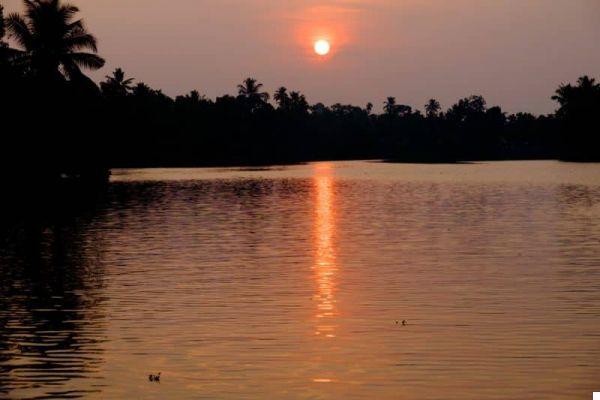
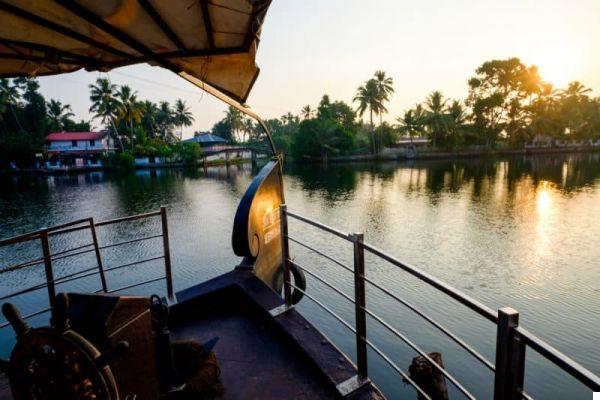
2. Make an Ayurvedic massage
La Ayurvedic medicine is one of the oldest in the world and it is said that she was born in Kerala; its principles were first documented about 2000 years ago, but it is believed that theayurveda had been practiced for several centuries. According to Ayurveda, the world has its own intrinsic balance and illness is nothing more than a departure from this order, a loss of balance. A fundamental concept in Ayurveda is that all human beings possess three doshas (humors): vata (wind or air), pitta (fire) and kapha (water / earth) and diseases are the result of an imbalance between these 3 doshas. Ayurvedic treatments aim to restore this balance and therefore good health. There are two main methods of obtaining it: panchkarama (internal purification) and massage. Each dosha is identified with certain foods and nutrition is an essential component of this type of practice. Find the Ayurvedic massages in all Kerala resorts and occasionally undergoing this treatment has a nice relaxing effect, but to have long-term benefits it usually takes at least 2 weeks (and all this is combined with a diet). to make a period of healthy detox? By the way Ayurvedic medicine is well integrated into the Indian national health system and you can find Ayurvedic hospitals all over the country.
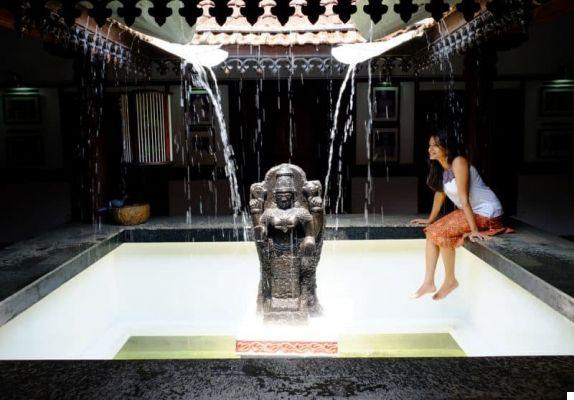
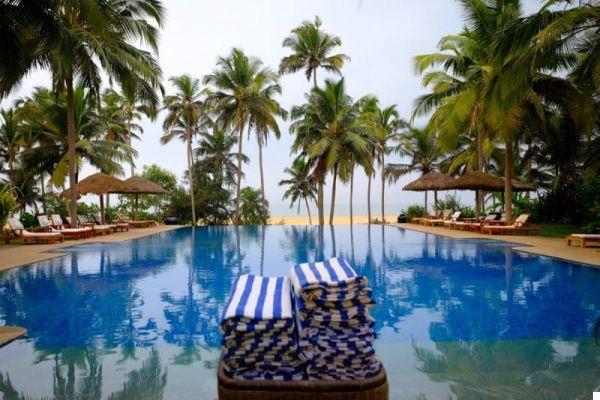
3.Visit the tea plantations in Munnar
After the backwaters, among the places to visit in Kerala there are definitely the tea plantations located around Munnar, in the mountains of the Ghati. Munnar is the main commercial center of tea and is set on a mountain landscape of rare beauty (these plantations are among the highest in the world). This former health resort (at the time of the English domination the lords came here to take refuge from the heat) is a perfect place to relax for a few days and enjoy absolutely magnificent views. Many agencies that organize the4 × 4 excursion among the plantations (impossible to reach with a normal car) and a visit to a tea factory (90% of the production is owned by the Tata, the family of the most famous Indian businessman). The fields seem hand-drawn in their perfection and it is wonderful to see the pride in the eyes of the women who collect tea dressed in traditional clothes. Just think that each woman collects between 100 and 120 kg of tea a day for a fee that is around 10 dollars .. sob.
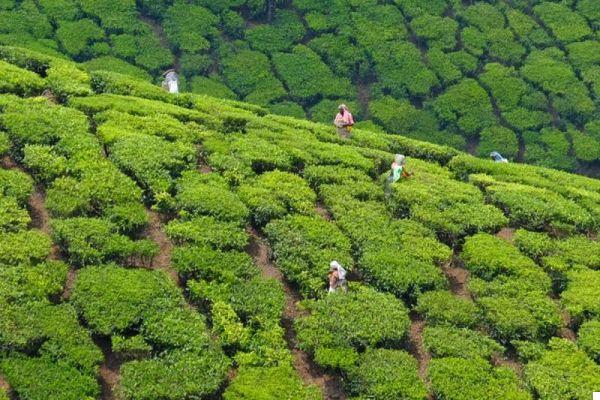
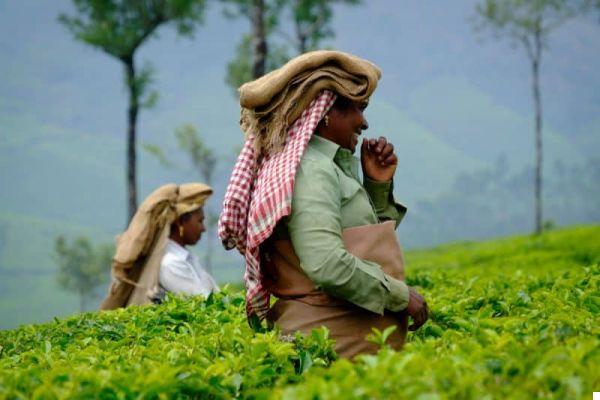
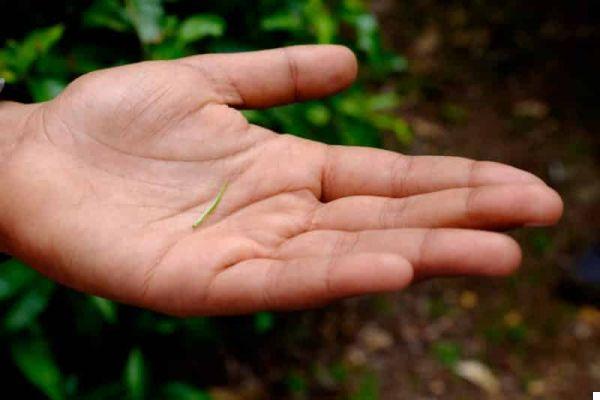
4. Relax on the beach
All the coast of Kerala it is bordered by fine sandy beaches protected by the shade of palm trees. The most famous locations are located in south of Kerala (above all Kovalam e Varkala), but in the north there are equally beautiful and less touristy ones. The north is now starting to develop as a tourist destination and is still a very authentic part of the region. For us who are used to the colors of the Mediterranean, the Indian Ocean is not one of the most beautiful seas in which you can swim, but the beaches are postcard-perfect, very long and often semi-deserted. In general, you should go there hotel or resort beaches because in the beaches frequented by the locals you will not be able to dress up out of respect for the local culture (Indian women take a bath dressed) and you will always feel your eyes on you. The water of the Indian Ocean is definitely warm compared to our seas and even the most cold will be able to bathe without worries.
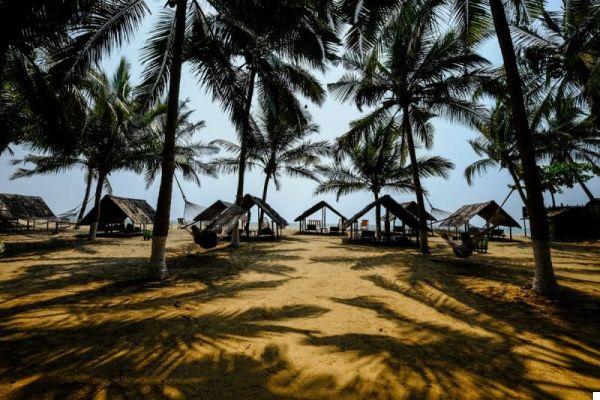
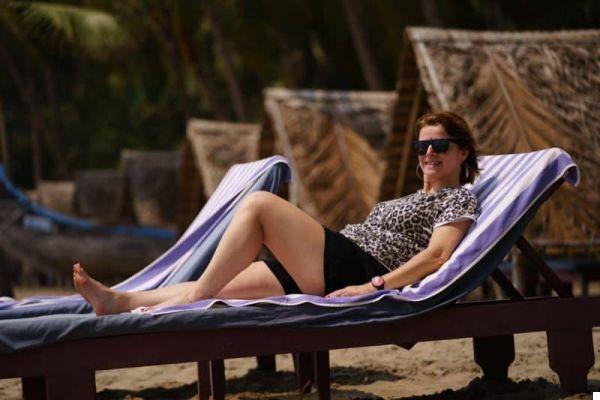
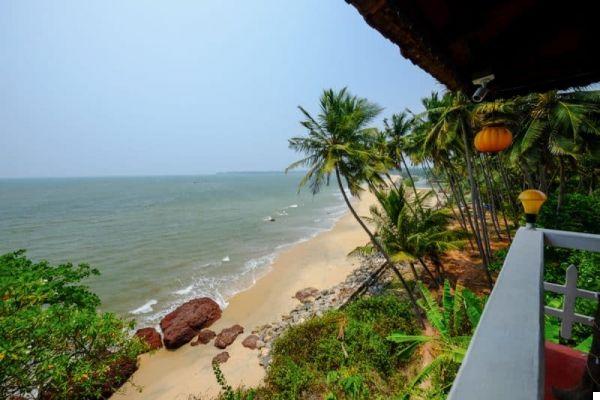
5.Explore the Wayanad Wildlife Sanctuary
One of the things I really liked about Kerala is its incredible variety of landscapes and it is a peculiarity of it compared to other famous regions of India (such as Rajasthan for example). In addition to the Munnar area, there is another one extremely green area in Kerala and is located further north, near Wayanad. The Wayanad Wildlife Sanctuary is a remote rainforest reserve that borders the Karnataka and Tamil Nadu regions. Here you will find an enchanting mosaic of rice fields, tea and coffee plantations, forests and beautiful resorts immersed in the jungle that will make you feel like a modern Indiana Jones. Starting from the small town of Wayanad you can make various jeep excursions which also include various sports activities such as trekking, rafting on bamboo canes, climbing and several others. If you love animals in this area you can spot elephants, mountain squirrels, monkeys, bison and other animals.
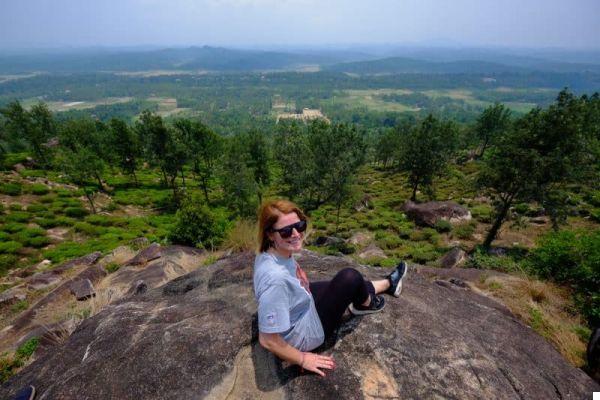
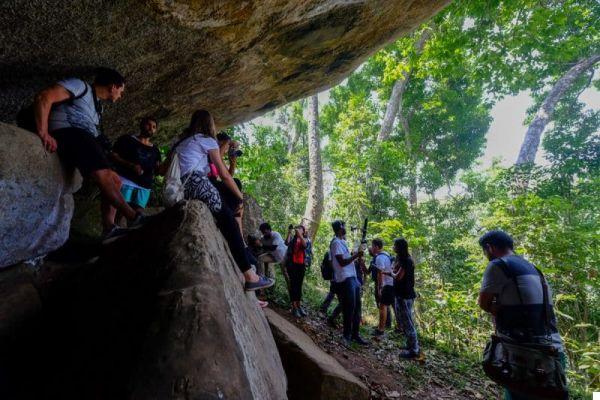
6. Attend a festival and see a traditional dance show (Kathakali and Theyyam)
Le festivals and traditions of Kerala they are among the most famous in India, not only for the way they are celebrated, but also for their number. On any night of the year, but especially between January and April, they are literally there hundreds of religious holidays, with rituals and music that are always different from each other, and it is not uncommon to come across a parade of festively decorated elephants. The festivals always take place in the temples or in the surrounding rice fields and you can attend them freely, without any fear. A separate disocorso must then be made for the Kathakali, one of the 4 great Indian classical dances that was born in Kerala. The subjects are the scenic transposition of epic poems; Kathakali includes over 100 different scenes and costumes and usually takes place for whole nights inside the temples, but you can also see performances in other places. The make-up takes hours to prepare, and the actors' apprenticeship takes about 15 years. In Kerala there is also there Theyyam, an ancient form of ritual art and is a sort of offering to the gods with the aim of keeping poverty and disease away.
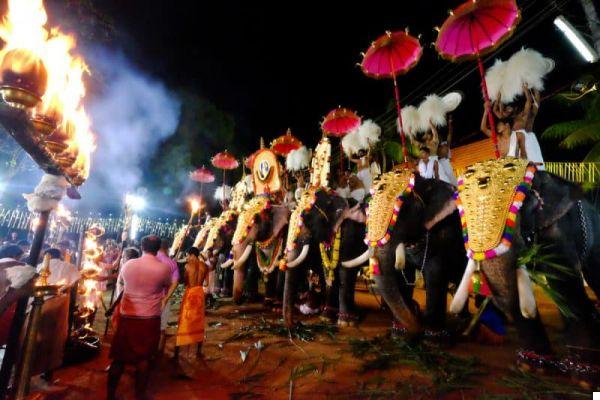
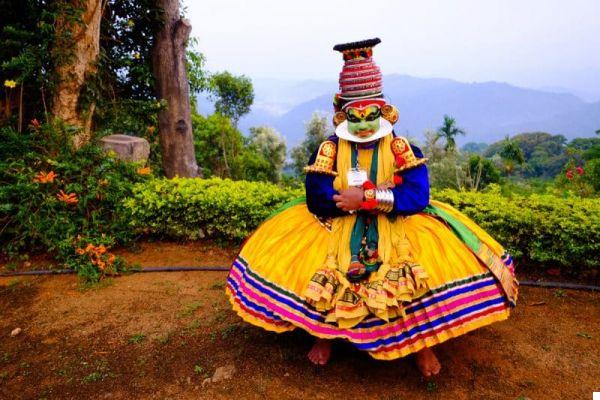
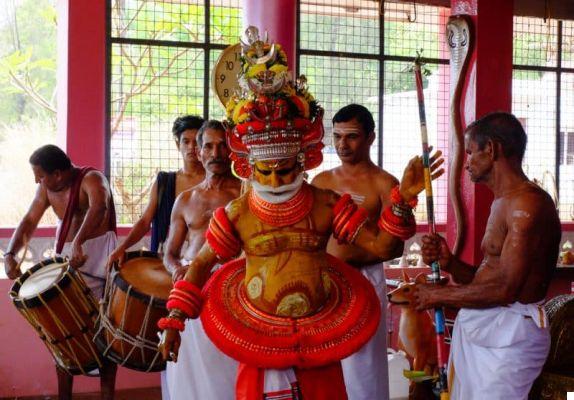 7. Stroll aimlessly in Fort Kochi
7. Stroll aimlessly in Fort Kochi
Kochi for me it is the most beautiful and interesting city in Kerala. It's composed by Ernakulam, on the mainland, and from several islands including Fort Kochi, which is the oldest part. Here lives a Jewish community rooted from time immemorial, here you can see the oldest church in India (St. Francis Church, which also kept Vasco de Gama's remains before they were moved to Lisbon), but also winding streets with Portuguese mosques and churches built 500 years ago, Chinese fishing nets introduced by the Mongolian merchants of Kublai Khan, a 500th century synagogue and finally a palace built by the Portuguese and given to the raja of Kochi. An incredible mix of styles, peoples and stories that make it absolutely unique. Treat yourself to a sunset cruise between the islands because it is really very impressive. In addition, every 2 years in Kochi Biennale d'Arte (the next will be in December 2018) and it is not uncommon to find works by international street artists on the walls of the houses of Fort Kochi: one more reason to spend a few days there.

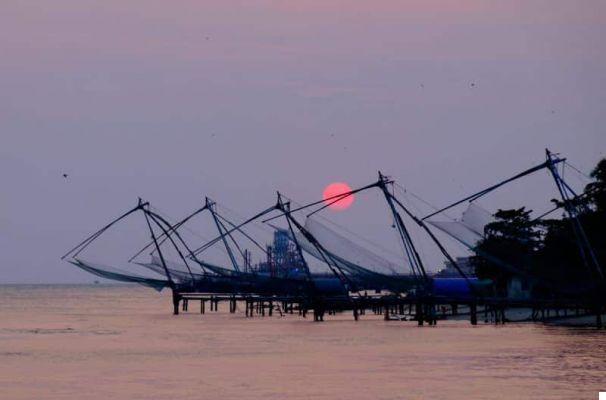
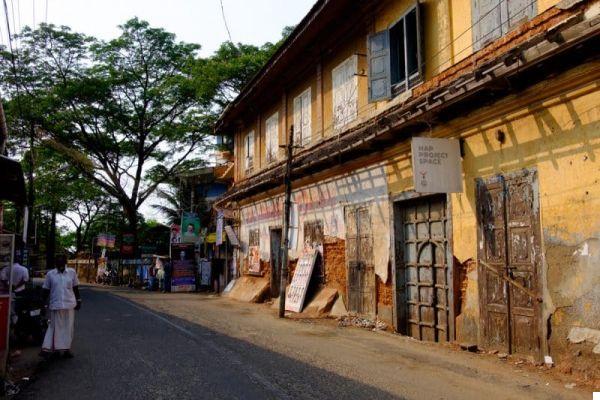
8. Attending a Kalaripayattu meeting
Il Kalaripayattu is a martial art originating from Kerala and it is practiced in part also in Tamil Nadu. It is the oldest known oriental martial art! It incorporates kicks, holds, choreographic sequences and weapons as healing techniques and there are several regional variations that are classified as Northern, Southern and Central styles. Kalaripayattu training aims at ultimate coordination between mind and body and includes specialization in indigenous medicinal practices and some religious rites.
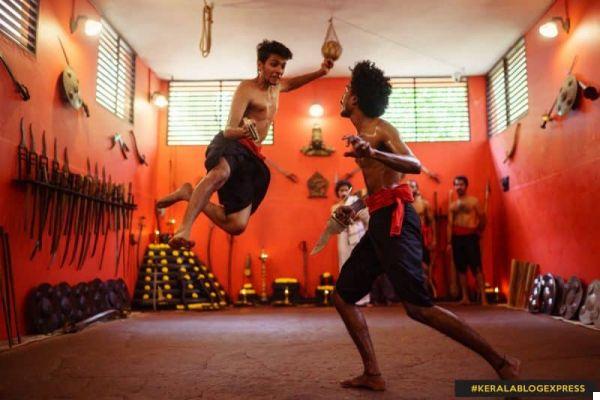
Ph. @ Kerala Tourism
9. Eat Sadya and other local delicacies
Thanks to his spices, Kerala was one of the states most frequented by Portuguese, English and Arab merchants and precisely from the encounter of these foreign influences with the raw materials of the region (lots of fish!) one of the most renowned cuisines in the country was born. The most typical custom of Kerala is the Sadya in which different dishes (up to 40!) are served on a large banana leaf and everything is then eaten with your hands, with the help of naan or chapati (different forms of bread) and rice. Most of the typical specialties of Kerala are based on fish (watch out for the thorns because they don't take them out!), Fried in coconut oil or boiled in coconut milk with spices. Other ingredients used for curry are ginger, cashews and mango.
Like all Indian cuisine, even that typical of Kerala can be very spicy so, if you are not used to chili, always ask before you find yourself making a fire eater!
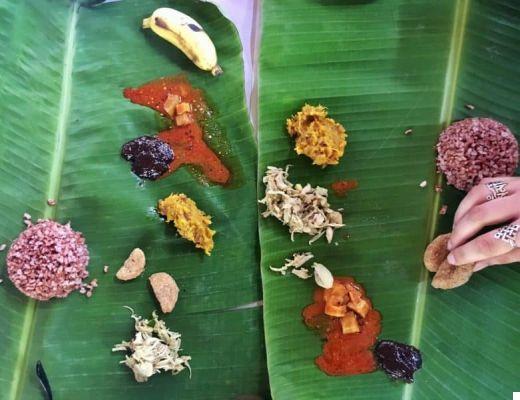
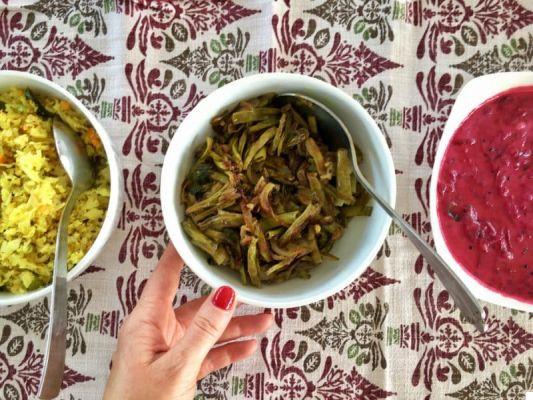
10. Participate in responsible tourism activities
I was pleasantly surprised to see that the responsible and sustainable tourism in India it is increasing more and more. There are many agencies and many accommodation facilities that work by putting the local community in the foreground to promote a healthy interaction between the tourism industry, local communities and travelers that does not alter the environment and social balance. Thanks to these activities, you can live authentic experiences, you can see how people really live in the villages and how their daily life takes place. During the Kerela Blog Express I had the opportunity to participate in some Responsible Tourism activities through the Kabani company in Kozhikode and it was really interesting to spend a whole afternoon in one of the villages on the backwaters doing various activities with the people who live there such as fishing, collecting coconuts, growing rice, building ropes and many others. I believe that these experiences are really useful because they force us to reflect that we often do not have the time or desire to do. In this specific case, I realized, once again, how you can live happily by having a simple life, made up of little things. Let's meditate people, let's meditate.
To encompass all the experiences mentioned above, you can contact Conscious Journeys, a tour operator that offers conscious tourism trips to Asia and that with this trip to South India will show you all the authenticity of the country.

